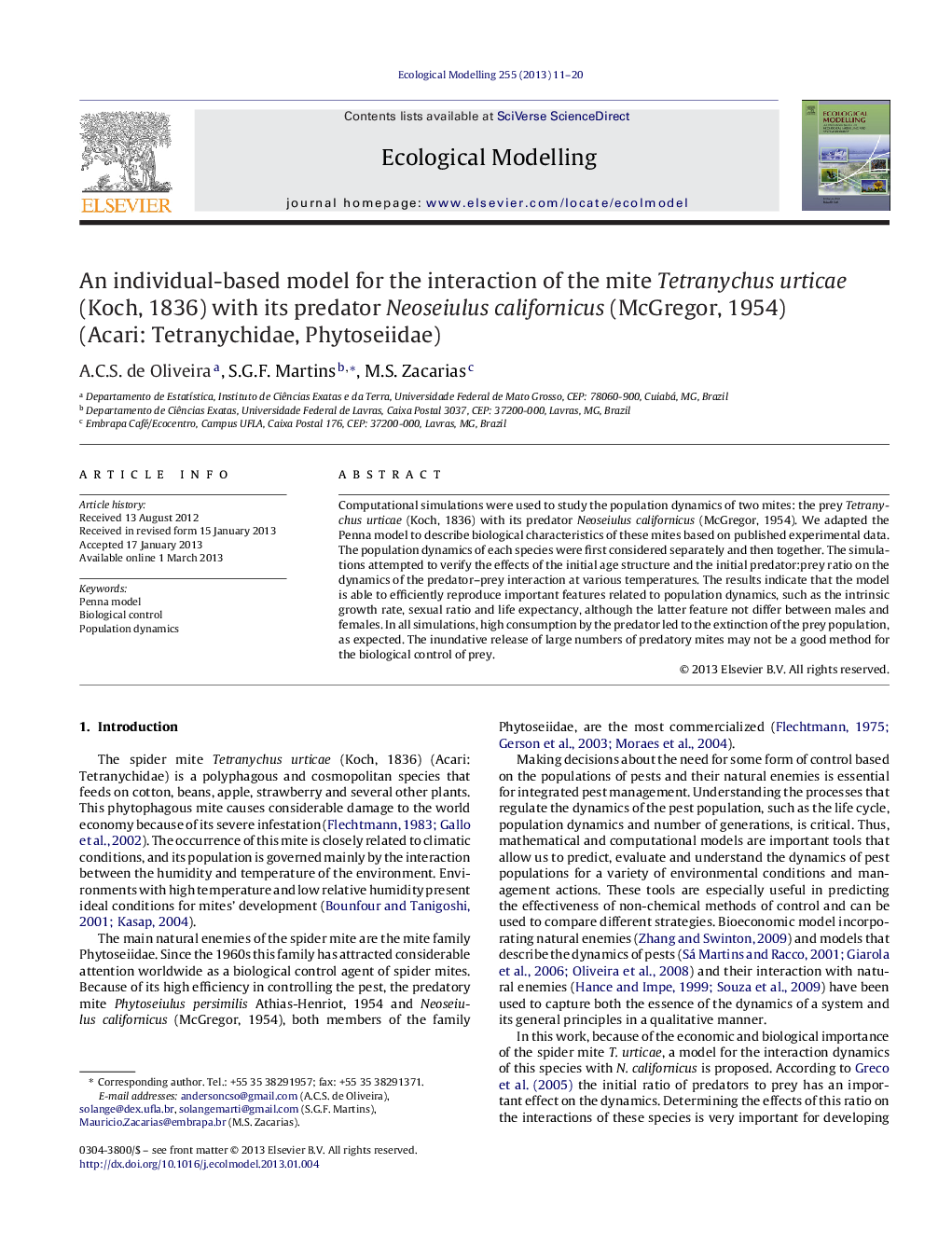| Article ID | Journal | Published Year | Pages | File Type |
|---|---|---|---|---|
| 4376115 | Ecological Modelling | 2013 | 10 Pages |
Computational simulations were used to study the population dynamics of two mites: the prey Tetranychus urticae (Koch, 1836) with its predator Neoseiulus californicus (McGregor, 1954). We adapted the Penna model to describe biological characteristics of these mites based on published experimental data. The population dynamics of each species were first considered separately and then together. The simulations attempted to verify the effects of the initial age structure and the initial predator:prey ratio on the dynamics of the predator–prey interaction at various temperatures. The results indicate that the model is able to efficiently reproduce important features related to population dynamics, such as the intrinsic growth rate, sexual ratio and life expectancy, although the latter feature not differ between males and females. In all simulations, high consumption by the predator led to the extinction of the prey population, as expected. The inundative release of large numbers of predatory mites may not be a good method for the biological control of prey.
Graphical abstractNormalized population density and sex ratio of T. urticae at 20 °C, 25 °C and 30 °C, with stable age structure, probability of meeting ϕ = 1.0 and initial predator:prey ratio equal to 0.01 (up) and 0.5 (down). Figure optionsDownload full-size imageDownload as PowerPoint slideHighlights► The model reproduces important features related to T. urticae and N. californicus. ► The high consumption of N. californicus led to extinction of the prey T. urticae. ► The inundative release of predator population may not be a good alternative. ► Higher initial ratio (predator/prey) does not guarantee a more efficient control. ► Differences in the extinction time of the prey occur from some values of ratio.
